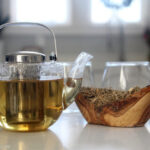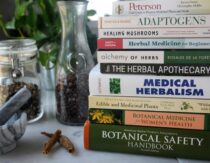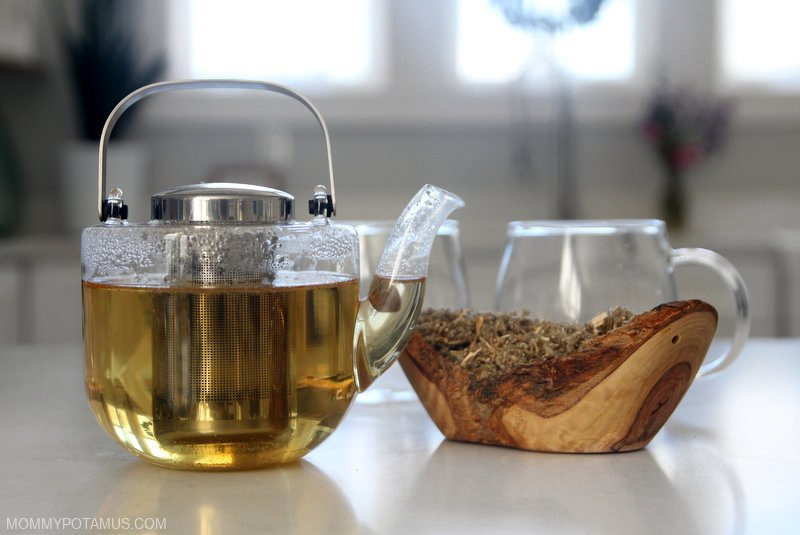
With names like Eye of the Star and houndsbane, horehound sounds almost mythical. If you ask an herbalist about it, though, they’ll tell you that its benefits are very tangible . . . and highly valued!
The Roman scholar Pliny once mentioned it as “a plant too well known to require any description,” and it has a long history of use for soothing coughs, digestive complaints and more throughout Europe, Asia and the Mediterranean. (1)
Though it’s less well-known these days, horehound was a primary ingredient in many original formulations for cough drops and cough syrups. It seems to be making a comeback, though – according to the American Botanical Council, it’s just behind elderberry as one of the top-selling ingredients for herbal supplements. (2)
So what is it helpful for? We’ll dive into that below, along with how to prepare it as a simple tea or tincture.
First, though, I want to mention that none of these statements have been evaluated by the FDA, this article is not medical advice, and it’s not meant to diagnose or treat any condition. If you have a question about whether any herb or dietary supplement is right for you, please talk with a qualified healthcare professional. Okay, let’s dive in!
What is horehound?
Often called white horehound or common horehound, this perennial herb can be recognized by its wrinkled leaves covered in soft hairs and small clusters of white flowers. It’s part of the famous mint family (lamiaceae), which makes it a relative of a wide range of therapeutic herbs including lemon balm, skullcap, catnip, rosemary and lavender, plus the obvious ones like peppermint and spearmint.
It’s latin name – Marrubium vulgare – is said to be derived from the Hebrew word “marrob,” which means “a bitter juice.” (3) The leaves and flowers are the parts that are traditionally used in remedies. Although they do have minty notes, they also contain bitter compounds, and that’s why they’re often balanced with honey or another sweetener in tea, throat drops, and herbal syrups. Not all preparations are sweetened, though – tinctures are a very popular way to consume horehound.
According to Medical Herbalism, some of the active constituents that have been identified are: diterpene lactones (marrubiin and premarrubiin), diterpene alcohols (marruciol, marrubenol, sclareol, peregrinin, dihydroperegrinin), essential oil (containing a-pinene, sabine, limonene, camphene, p-cymol, a-terpinolene), flavonoids (apigenin, luteolin, quercetin), alkaloids, tannins, phytosterols, and alkanes.
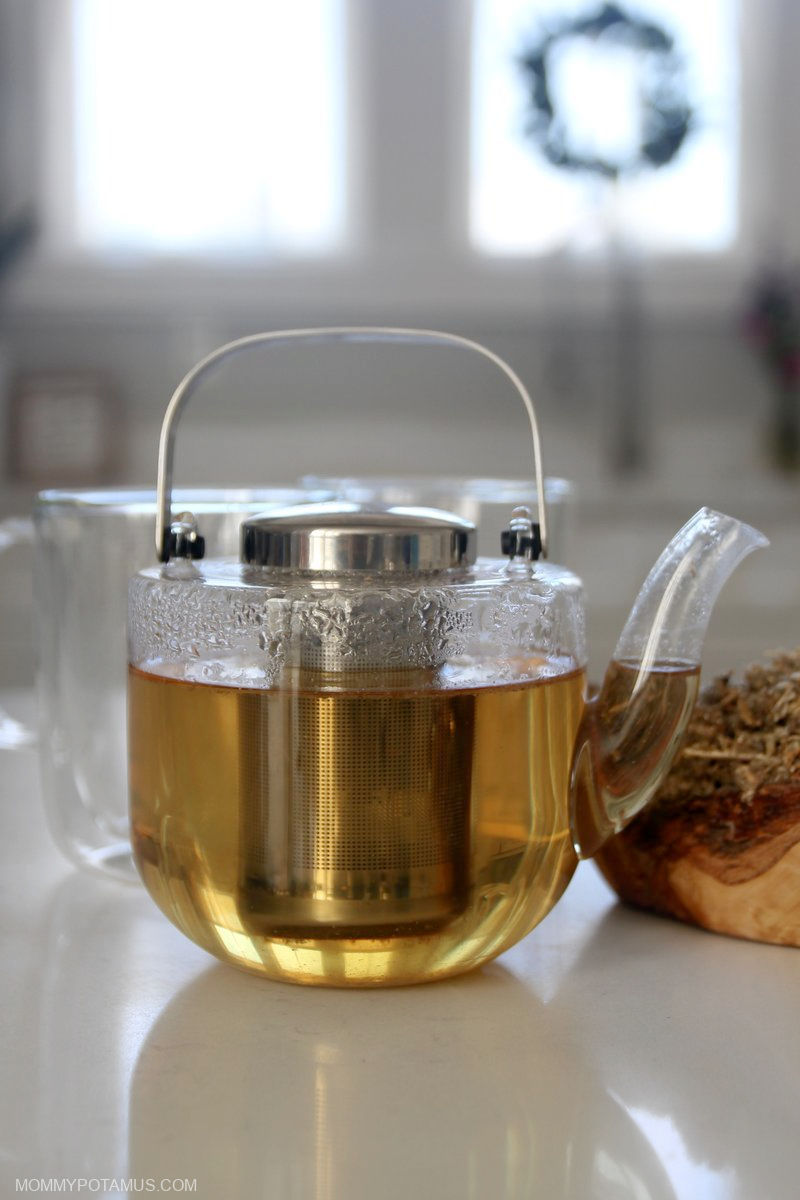
3 Benefits of Horehound
Nicholas Culpepper – a 17th Century rebel herbalist who angered the Royal College of Physicians by translating their Latin Pharmacopoeia into English so commoners had access to medical information – considered horehound one of the best herbs for supporting the movement of phlegm. To this day, respiratory support is still one of its most common uses.
Let’s take a look at each one:
#1 – Soothes Coughs And Sore Throats
“Singers and performers have long treasured horehound to soothe strained vocal chords and help them carry on the show,” and for good reason. (4) It’s rich in several potent antioxidants that have been found to soothe inflammation and ease discomfort. (5) (6)
#2 – Upper Respiratory Support
Horehound is approved by Germany’s Commission E and the European Medicines Agency (EMA) for respiratory support under the ‘traditional use registration’ for herbal remedies. It’s thought to benefit the respiratory system in several ways. For example, it:
- Helps to relax the smooth muscles of the bronchus (3)
- Contains bitter compounds which are thought to promote the flow and elimination of mucus (4)
- Has astringent properties that help tone tissues (Due to its astringent properties it is also sometimes used externally to support wound healing) (3)
#3 – Supports Digestion
Horehound is often used to ease discomfort from gas, bloating, and indigestion. It contains bitter compounds, and when our taste buds detect them they “recognize the taste as being potentially poisonous. As a result . . . our systems go into full alert and digestive juices start flowing in order to mitigate any poisons entering our system.” (7) (3)
In other words, the compounds get our digestive systems all revved up, which increases the flow of stomach acid (HCl), bile, and enzymes so that we can break down and absorb nutrients. Bile also helps with Phase II of liver detoxification by binding with toxins and then eliminating them via the digestive tract.
According to herbalist Richo Cech, author of Making Plant Medicines, it can also have a gentle laxative effect.
Horehound Tea Recipe
The bitter notes of this tea make it challenging to sip plain, so I suggest balancing the flavor with a bit of honey or molasses. You can find a printable version of this recipe at the bottom of this article.
Ingredients:
- 1-2 teaspoons dried horehound
- 1 cup boiling water
Directions
Pour boiling water over the leaves, cover the cup with a plate, and let them steep for 10-12 minutes. Strain out the leaves and sweeten your herbal tea with honey, maple syrup, or any other sweetener if desired. A squeeze of lemon can be a good addition, too.
Suggested Use
JJ Pursell, author of The Herbal Apothecary, suggests 1 to 3 cups per day.
Horehound Tincture Recipe
You can find a printable version of this recipe at the bottom of this article.
Ingredients
- 1 ounce dried horehound (by weight)
- 5 ounces of 120 proof alcohol (by volume)
To Make
- Add 1 ounce of dried horehound (by weight) to an 8 ounce jar. Pour the alcohol over the horehound, then cover the with a lid and shake it well. If desired, write the start date on the jar using a sticky note, label, or piece of tape – it makes keeping track of how long it’s been steeping easier.
- Place the jar in a dark, room temperature area. (I keep mine in a kitchen cabinet.) Let the mixture steep for 2-5 weeks, shaking occasionally.
- When it’s ready, strain the mixture through a cheesecloth, making sure to squeeze out as much liquid as possible. Pour the tincture in a clean jar or dropper bottle and store it in a cool, dark area.
Suggested Use
In The Modern Herbal Dispensatory, herbalists Thomas Easley and Steven Horne suggest 0.5-3 ml (0.1-0.6 tsp), 3 times daily.
Contraindications
The Botanical Safety Handbook, Second Edition classifies horehound as a Safety Class 2B herb, which means is not recommended for use during pregnancy except under the supervision of a qualified healthcare practitioner.
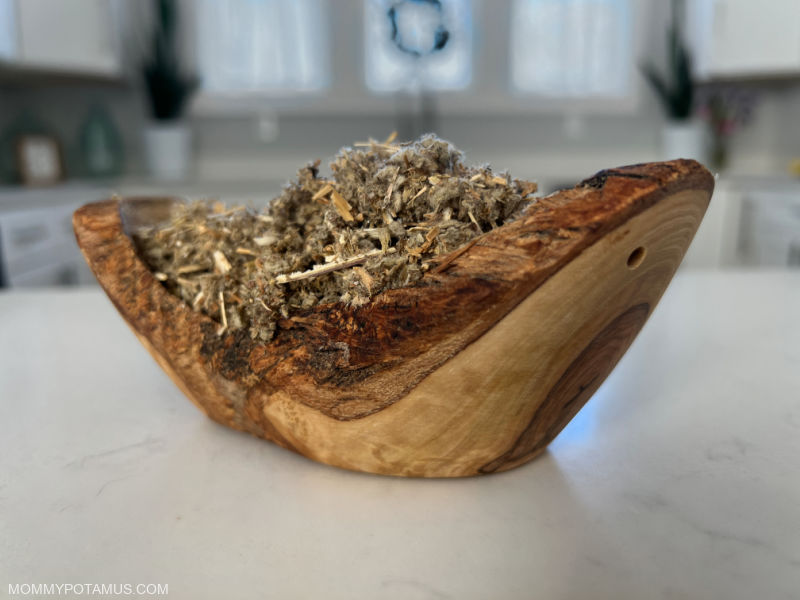
What To Buy If You Don’t Want To DIY
Horehound Tincture from Mountain Rose Herbs – Made with organic horehound and alcohol, this tincture is made in small batches in Eugene, Oregon.
Chest Care Extract from Mountain Rose Herbs – This herbal support blend includes fresh osha root, fresh organic ginger root, fresh organic elecampane root, organic horehound, organic licorice root, fresh organic marshmallow root, fresh organic mullein leaf, and organic pleurisy root.
Horehound Glycerite from Hawaii Pharm – This is a great option for anyone looking for an alcohol-free extraction.
Herbs for Kids Horehound Blend – Formulated with kids taste buds in mind, this blend incorporates mullein leaf, astragalus root, horehound, garden sage leaf, orange peel, oregon grape root, and ginger root.
Horehound Tea & Tincture Recipes
Ingredients
Horehound Tea Ingredients
- 1-2 tsp dried horehound
- 1 cup boiling water
Horehound Tincture Ingredients
- 1 oz. dried horehound (by weight)
- 5 oz 120 proof alcohol (by volume)
Instructions
Horehound Tea Instructions
- Pour boiling water over the leaves, cover the cup with a plate, and let them steep for 10-12 minutes.
- Strain out the leaves and sweeten your herbal tea with honey, maple syrup, or any other sweetener if desired. A squeeze of lemon can be a good addition, too.
Horehound Tincture Ingredients
- Add 1 ounce of dried horehound (by weight) to an 8 ounce jar. Pour the alcohol over the horehound, then cover the with a lid and shake it well. If desired, write the start date on the jar using a sticky note, label, or piece of tape – it makes keeping track of how long it’s been steeping easier.
- Place the jar in a dark, room temperature area. (I keep mine in a kitchen cabinet.) Let the mixture steep for 2-5 weeks, shaking occasionally.
- When it’s ready, strain the mixture through a cheesecloth, making sure to squeeze out as much liquid as possible. Pour the tincture in a clean jar or dropper bottle and store it in a cool, dark area.
Notes
Want more research-backed natural remedies?
No problem, I’ve created a free ebook for you – Kitchen Apothecary: 25+ Natural Remedies Using Ingredients From Your Pantry – as a gift for signing up for my newsletter. You’ll also get updates when I post about safe essential oils for pregnant/breastfeeding mamas, exclusive gifts and coupons (I was able to give away a jar of free coconut oil to anyone who wanted it recently!), plus other goodies.
Sign up using the form below.
Sources
- Choffnes, Dan (2016) Nature’s Pharmacopeia: A World of Medicinal Plants
- American Botanical Council (Fall 2021) Herbal Supplement Sales in US Increase by Record-Breaking 17.3% in 2020
- Hutchens, Alma (1991) Indian Herbology of North America
- Pursell, JJ (2015) The Herbal Apothecary: 100 Medicinal Herbs and How to Use Them
- de Souza, M.M. et. al. (1998) Analgesic profile of hydroalcoholic extract obtained from Marrubium vulgare
- Aćimović, Milica et. al. (2020) Marrubium vulgare L.: A Phytochemical and Pharmacological Overview
- de la Foret, Rosalee (2017) Alchemy of Herbs

